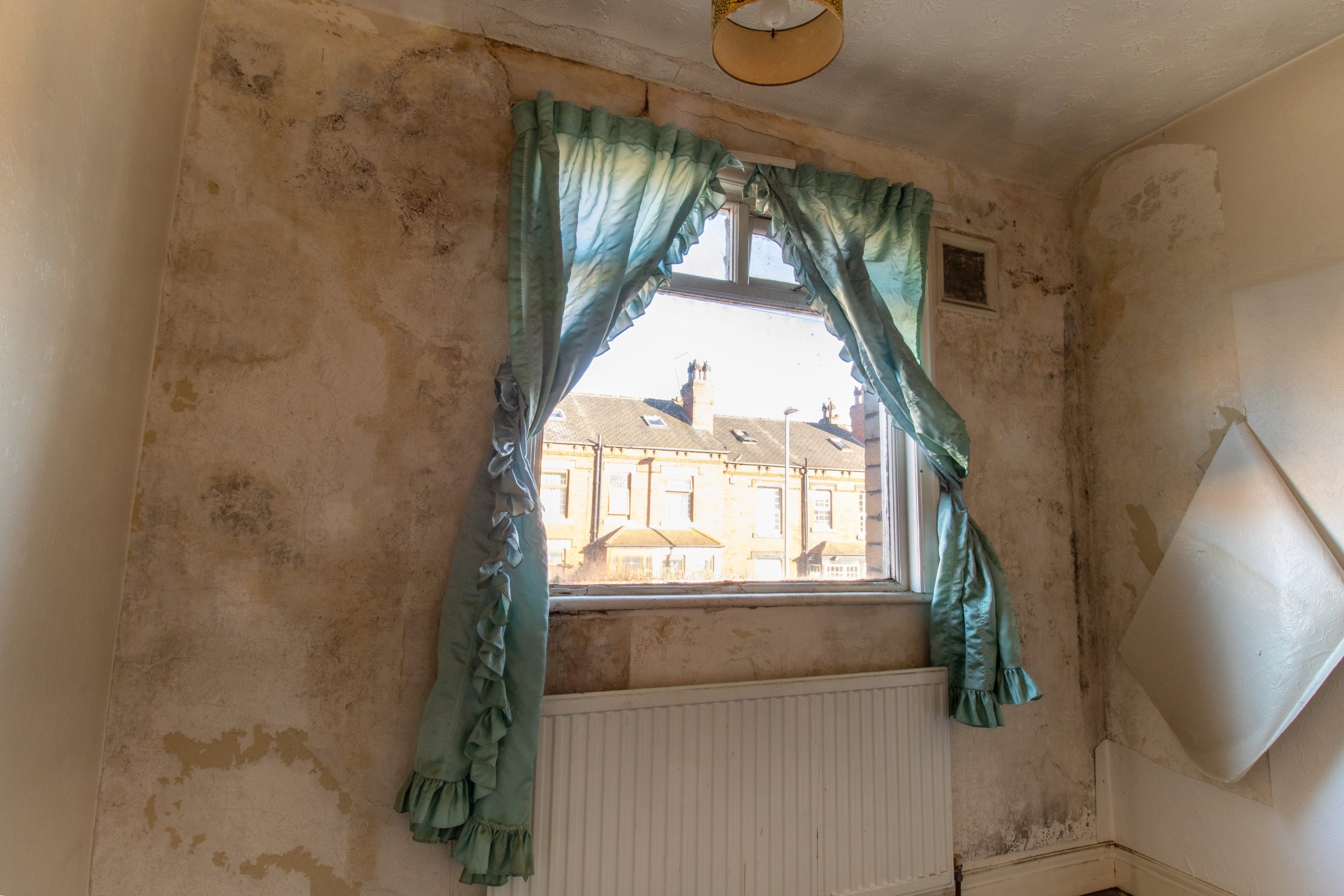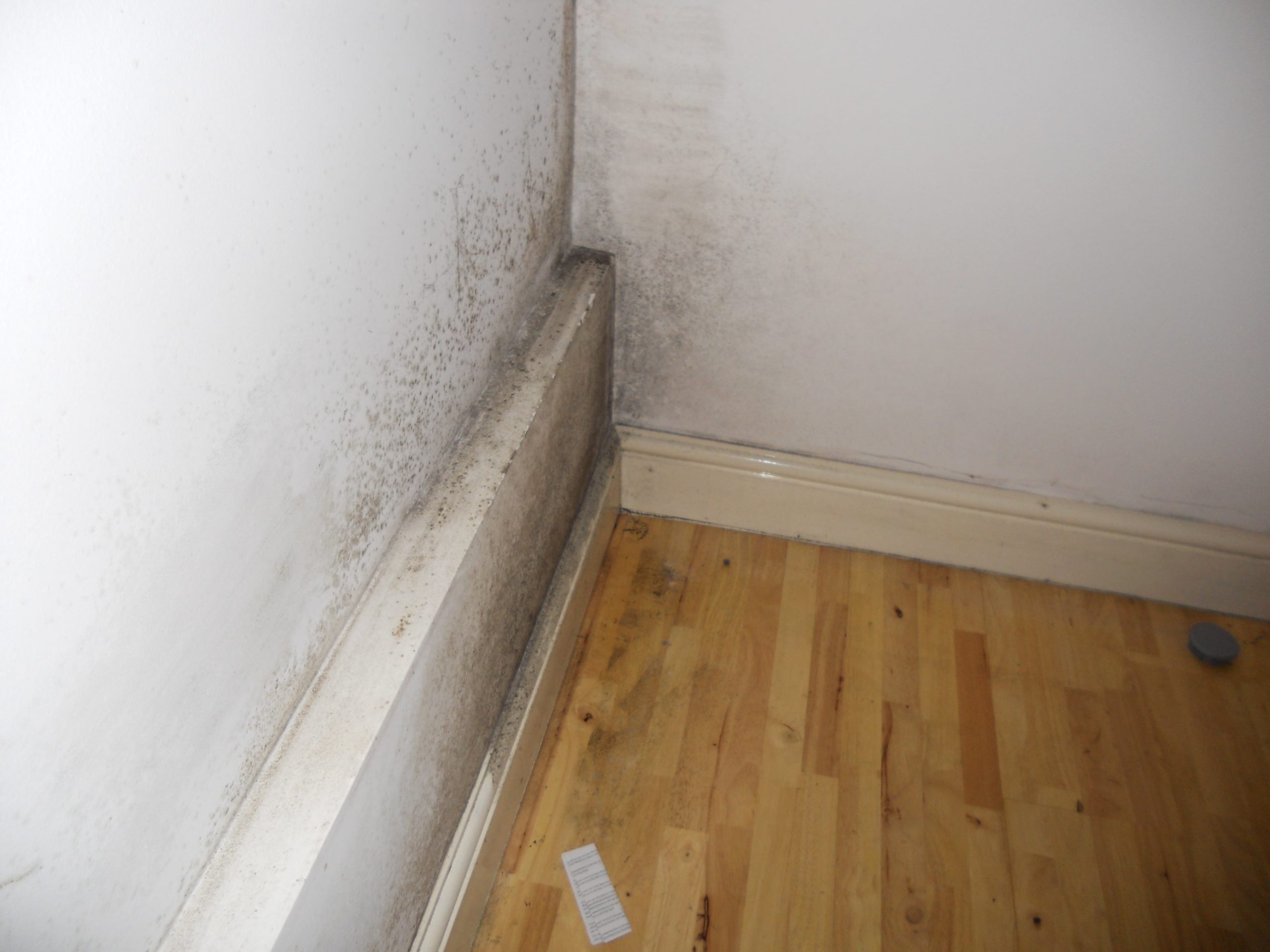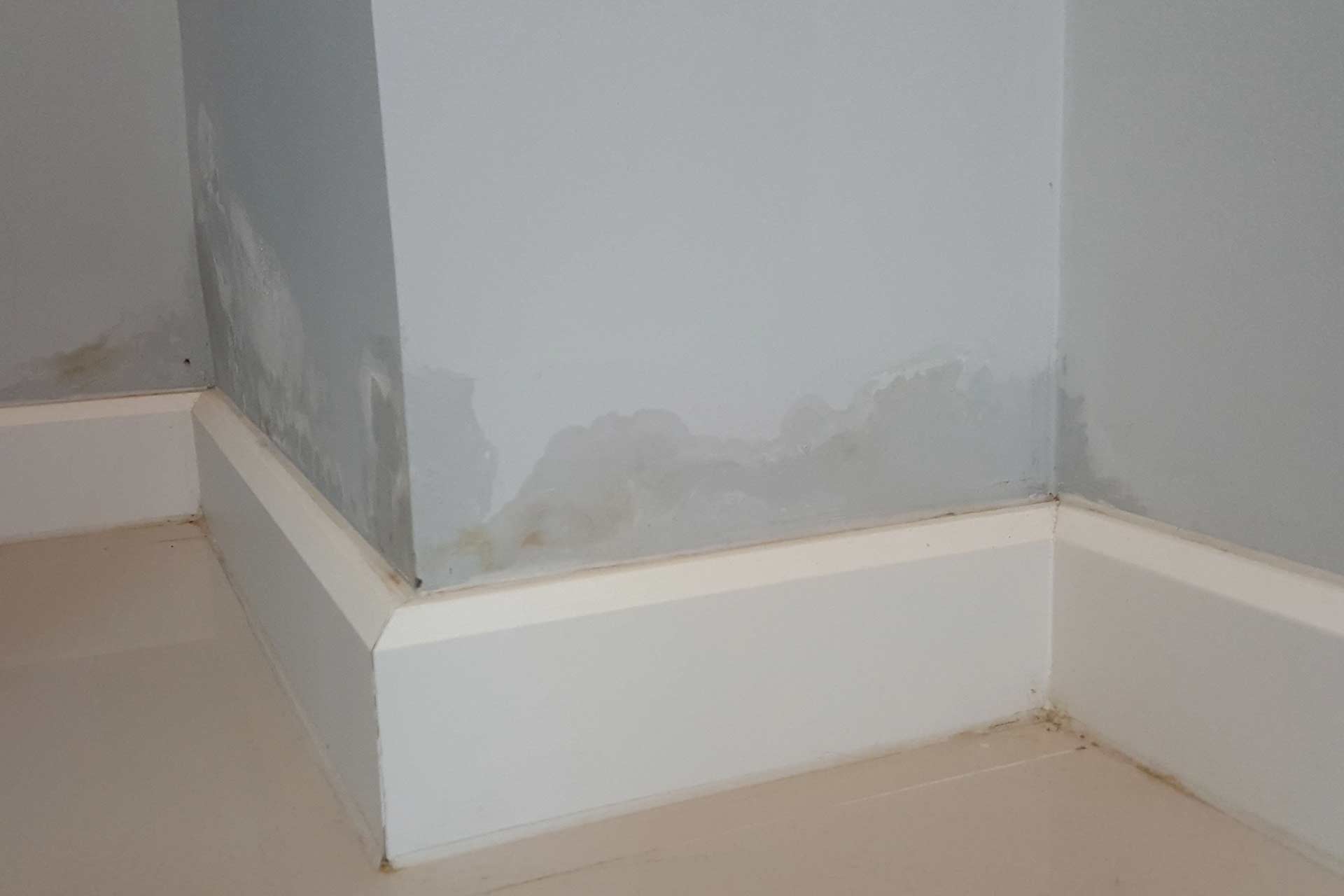Causes of Damp Walls in Bedrooms

Damp walls in bedrooms can be a frustrating and unwelcome problem. They can cause a range of issues, including mold growth, health problems, and a feeling of discomfort. Understanding the causes of dampness is essential for identifying and resolving the issue.
Types of Dampness
Dampness in bedrooms can be caused by several factors, and understanding the different types of dampness is crucial for effective remediation.
- Rising Damp: Rising damp occurs when moisture from the ground travels upwards through porous materials like brickwork and mortar. This is often caused by a lack of a damp-proof course (DPC) or a damaged DPC. The presence of rising damp is often indicated by damp patches on lower walls, particularly near the floor level.
- Penetrating Damp: Penetrating damp occurs when rainwater or moisture enters the building through cracks, gaps, or faulty flashing around windows and doors. This can be caused by defective roof coverings, leaking pipes, or inadequate drainage around the building. The presence of penetrating damp is often indicated by damp patches on external walls, particularly after heavy rainfall.
- Condensation: Condensation occurs when warm, moist air comes into contact with cold surfaces, such as walls, windows, and ceilings. This is often caused by inadequate ventilation, poor insulation, and excessive moisture from activities such as cooking, showering, and drying clothes indoors. The presence of condensation is often indicated by damp patches on internal walls and windows, particularly in colder months.
Causes of Rising Damp
Rising damp is often caused by:
- Lack of a Damp-Proof Course (DPC): A DPC is a horizontal barrier that prevents moisture from rising through the walls. If a DPC is missing or damaged, moisture can easily travel upwards, leading to rising damp.
- Damaged Damp-Proof Course (DPC): Even if a DPC is present, it can become damaged over time due to factors such as ground movement, poor installation, or deterioration. This can allow moisture to penetrate the DPC and rise through the walls.
- High Ground Water Levels: High ground water levels can also contribute to rising damp, particularly in areas with poor drainage or heavy rainfall. This can force moisture upwards through the walls, even if a DPC is present.
Causes of Penetrating Damp
Penetrating damp is often caused by:
- Faulty Roofing: Damaged or defective roof coverings can allow rainwater to penetrate the building, leading to penetrating damp. This can be caused by cracked tiles, missing slates, or blocked gutters.
- Leaking Pipes: Leaking pipes can also cause penetrating damp, particularly if they are located near external walls. This can be caused by faulty pipework, corrosion, or poor installation.
- Inadequate Drainage: Poor drainage around the building can also lead to penetrating damp, as it can allow rainwater to pool against the walls and seep into the building.
- Inadequate Ventilation: Poor ventilation can trap moisture in the air, leading to condensation on cold surfaces. This can be caused by insufficient air changes, blocked vents, or a lack of extractor fans in kitchens and bathrooms.
- Poor Insulation: Poor insulation can allow heat to escape from the building, making internal surfaces colder and more susceptible to condensation. This can be caused by inadequate insulation in walls, roofs, and floors.
- Excessive Moisture: Excessive moisture from activities such as cooking, showering, and drying clothes indoors can also contribute to condensation. This can be exacerbated by a lack of ventilation and poor insulation.
- Peeling Paint: Dampness can cause paint to peel, blister, or flake off the walls. This is a strong indication of moisture trapped beneath the surface.
- Mold Growth: Mold thrives in damp environments. You might notice black, green, or white patches on the walls, particularly in corners or areas with poor ventilation.
- Discolored Walls: Dampness can cause the walls to become discolored, often appearing darker or with a yellowing hue. This discoloration is a result of moisture seeping into the wall materials.
- Types of Moisture Meters: There are various types of moisture meters available, including pin-type, surface-type, and non-invasive meters. Each type measures moisture in different ways, so choose the one that best suits your needs.
- Reading Moisture Levels: The moisture meter will display a reading that indicates the moisture level in the wall. This reading is typically expressed as a percentage. A higher percentage indicates a higher moisture content.
- Interpreting Readings: The readings from a moisture meter should be interpreted in conjunction with other signs of dampness, such as visual observations and the location of the problem.
- Location of the Problem: The location of the dampness can provide clues about the source. For example, dampness near a window might indicate a leak, while dampness in a corner could suggest condensation.
- Severity of the Problem: The severity of the dampness can also help you determine the source. If the dampness is localized, it might be a minor issue, but if it’s widespread, it could indicate a more serious problem.
- Other Signs: Look for other signs of dampness, such as musty odors, water stains, or dripping sounds. These clues can help you narrow down the potential sources.
- Applying a Waterproof Membrane: This involves installing a waterproof membrane on the exterior walls, acting as a barrier against water penetration. The membrane is typically made of materials like PVC or rubberized asphalt. The cost of this solution can vary depending on the size of the wall and the type of membrane used, ranging from $500 to $2,000. It usually takes 1-2 days to install the membrane.
- Repointing Mortar Joints: Damaged or cracked mortar joints can allow water to seep into the walls. Repointing involves removing the old mortar and replacing it with new, waterproof mortar. This solution is relatively inexpensive, costing around $100 to $500, and can be completed in a few hours to a day.
- Installing a Waterproofing Coating: Applying a waterproof coating to the exterior walls can create a protective layer against water. These coatings are typically made of acrylic or silicone-based materials. The cost of this solution can range from $500 to $1,500, depending on the size of the wall and the type of coating used. The application process takes around 1-2 days.
- Installing an extractor fan: An extractor fan in the bathroom or kitchen can help remove moisture-laden air from the bedroom. Installing an extractor fan costs around $100 to $300 and can be done within a few hours. It’s important to ensure the fan is connected to an external vent to effectively remove moisture.
- Opening windows regularly: Opening windows for short periods daily, even during colder months, can help circulate fresh air and reduce humidity levels. This is a simple and cost-effective solution, but it may not be sufficient in areas with high humidity or during extreme weather conditions.
- Using a dehumidifier: A dehumidifier can help remove excess moisture from the air, particularly during humid seasons. The cost of a dehumidifier varies depending on its size and features, ranging from $100 to $500. It’s essential to choose a dehumidifier with the appropriate capacity for your bedroom size.
- Adding insulation to the walls: This involves installing insulation materials like fiberglass or mineral wool between the wall studs. The cost of this solution can vary depending on the type of insulation and the size of the wall, ranging from $500 to $2,000. It usually takes 1-2 days to install insulation.
- Installing a thermal break: A thermal break is a layer of insulating material placed between the wall and the window frame, preventing heat transfer and condensation. This solution can cost between $100 and $500 per window, depending on the type of thermal break and the size of the window. Installation can be completed within a few hours per window.
Causes of Condensation
Condensation is often caused by:
Identifying Dampness in Bedrooms: Damp Walls In Bedroom

Recognizing the signs of dampness in your bedroom is crucial for addressing the problem promptly and preventing further damage. Early detection allows you to take action before the situation worsens and affects your health and well-being.
Visual Signs of Dampness
The appearance of your bedroom walls can provide valuable clues about the presence of dampness. Here are some common visual indicators:
Using a Moisture Meter
A moisture meter is a handy tool for measuring the moisture content in walls. It helps you determine the severity of the dampness problem and pinpoint the areas that require attention.
Identifying the Source of Dampness
Understanding the source of dampness is essential for finding the right solution. Here are some tips for pinpointing the origin:
Solutions for Damp Walls in Bedrooms

Dealing with damp walls in your bedroom can be a frustrating experience, but it doesn’t have to be a permanent problem. Several effective solutions can address different types of dampness, improving your bedroom’s comfort and health. This section will explore various approaches to tackling dampness, including waterproofing, ventilation, and insulation, along with the costs and time involved.
Waterproofing Solutions
Waterproofing is essential to prevent water from entering your bedroom walls. This is especially crucial if the dampness originates from external sources like rain or leaking pipes.
Ventilation Solutions
Proper ventilation is crucial for removing moisture from the air, preventing condensation and dampness.
Insulation Solutions, Damp walls in bedroom
Insulation helps prevent heat loss and reduce condensation on cold walls. This can be particularly effective in areas with cold climates.
Solutions for Different Types of Dampness
| Type of Dampness | Solution | Cost (USD) | Time (Days) |
|---|---|---|---|
| Rising Damp | Waterproofing Membrane, Damp-Proof Course | $500 – $2,000 | 1 – 2 |
| Penetrating Damp | Repointing Mortar Joints, Waterproofing Coating | $100 – $1,500 | 1 – 2 |
| Condensation | Extractor Fan, Dehumidifier, Insulation | $100 – $500 | 1 – 2 |
Damp walls in bedroom – Damp walls in a bedroom can be a real mood killer, especially when you’re trying to create a calming and inviting space. Instead of letting the dampness dampen your spirits, why not embrace the challenge and transform your walls into a personal art gallery?
There are so many beautiful framed prints for bedroom walls that can instantly elevate the look and feel of your room, even with a bit of moisture in the air. Just make sure you choose prints that are water-resistant and consider using a sealant to protect your investment.
Damp walls in a bedroom can be a real mood killer, creating a sense of coldness and dampness that’s hard to shake. If you’re looking for a way to brighten up the space and banish those dreary vibes, consider embracing the warmth and vibrancy of pink and purple bedroom walls.
These colors can add a touch of whimsy and playfulness, creating a more inviting and cheerful atmosphere. Of course, tackling the dampness issue is crucial before embarking on any decorating project, but once those walls are dry, a splash of pink and purple can truly transform the space.